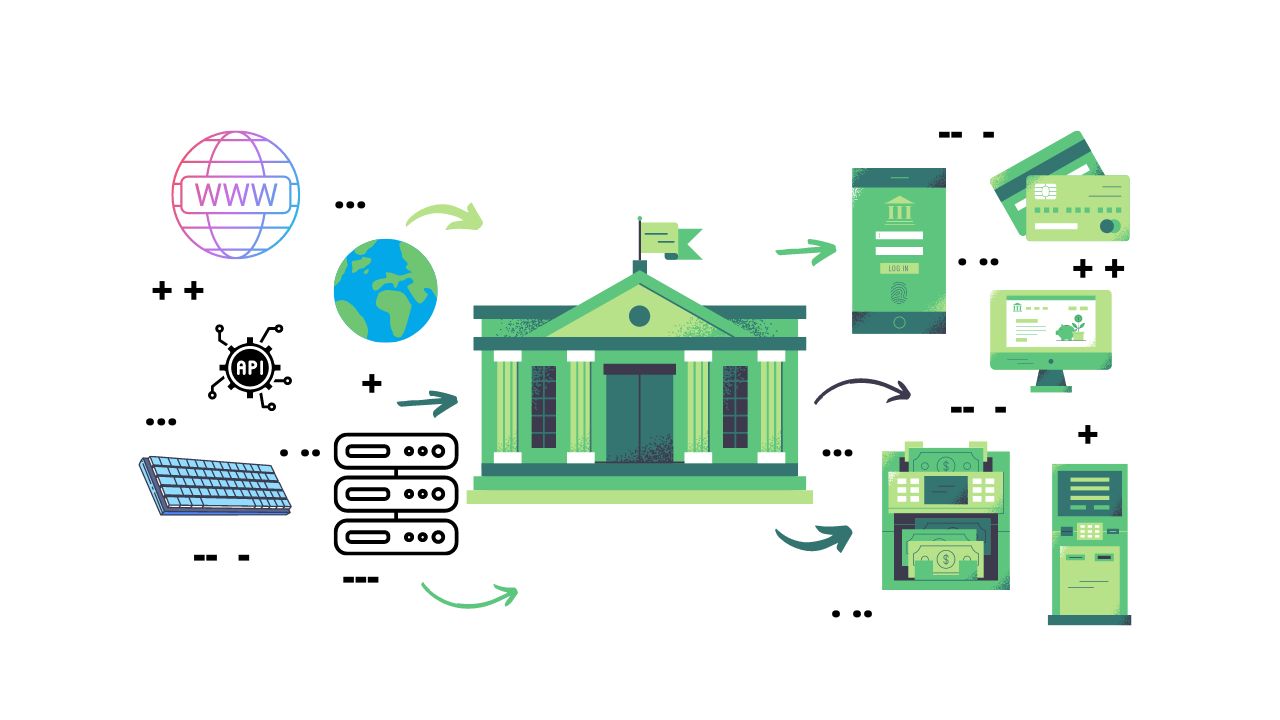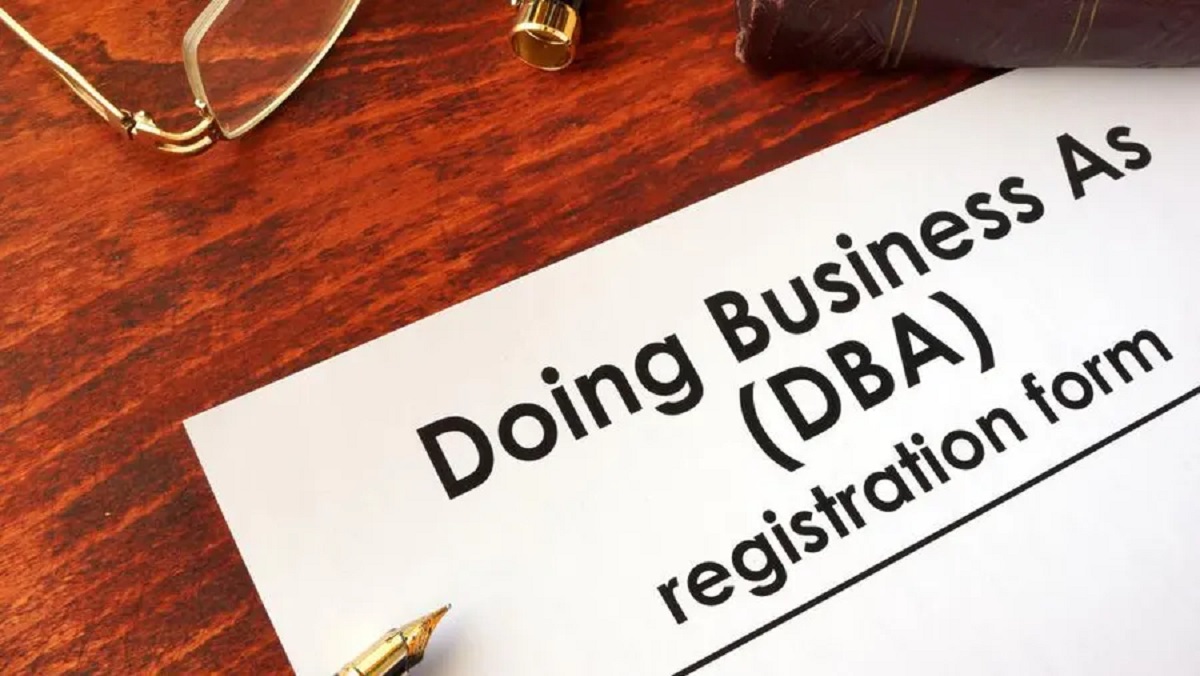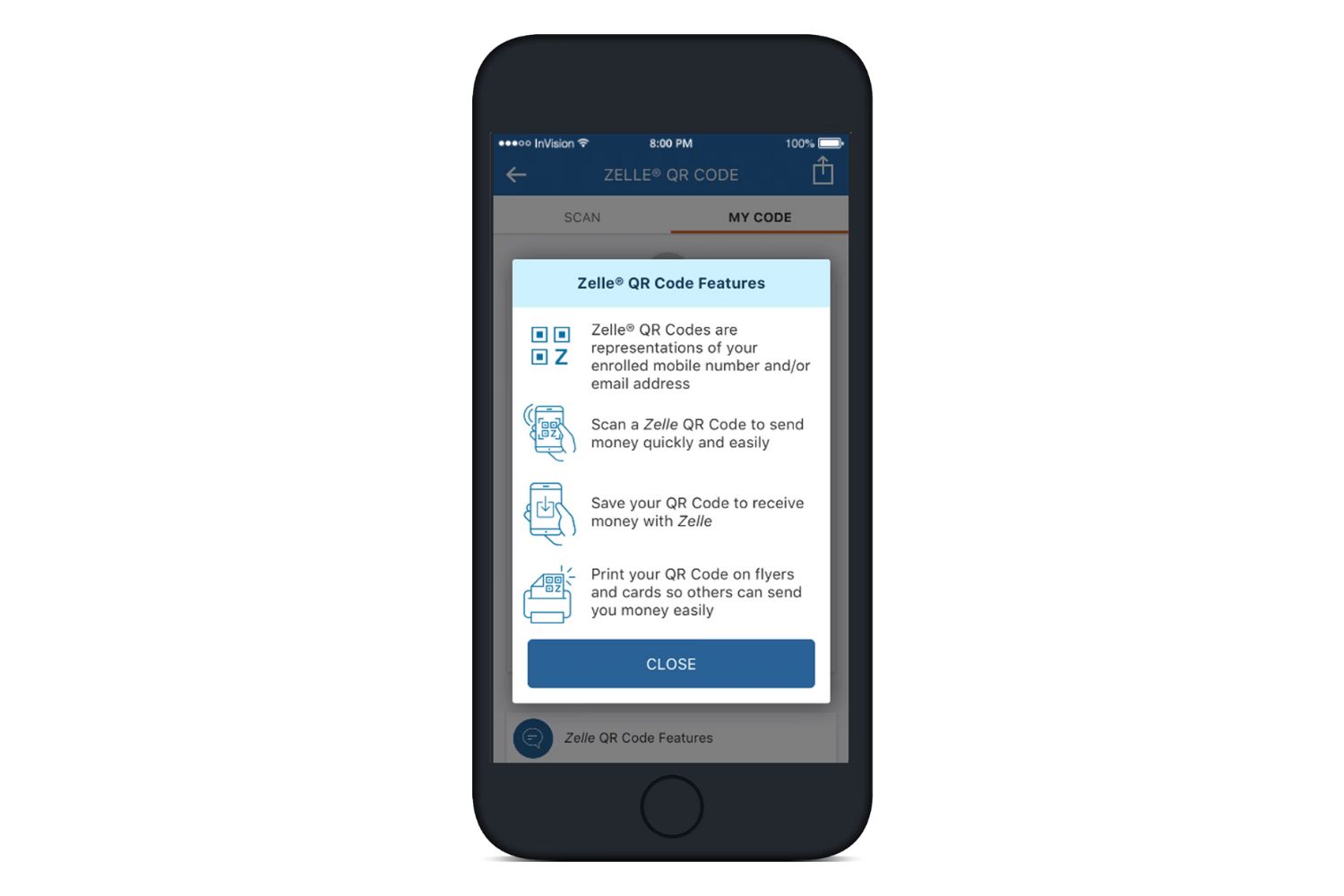Introduction
Welcome to the world of banking! Opening a bank account is an essential step towards financial security and convenience. Whether you’re looking to manage your personal finances or starting a business, having a banking account provides you with a secure place to store your money, access various financial services, and plan for your future.
When it comes to choosing a bank and opening an account, it’s important to understand the different options available and the documentation required. In this guide, we will walk you through the process of opening a banking account, whether it’s for personal or business use.
Having a bank account offers numerous benefits. Firstly, it provides a safe and secure place to keep your money, reducing the risk of theft or loss compared to keeping cash on hand. Additionally, a bank account allows you to easily manage your funds, make transactions, and track your spending. It also opens the door to accessing other financial services such as loans, credit cards, and investment options.
Before diving into the account opening process, it’s important to choose the right banking institution. Consider factors such as reputation, customer service, branch or ATM accessibility, and any additional services they offer. Researching and comparing multiple banks will help you find the one that aligns with your needs.
Whether you’re an individual or a business owner, there are various types of banking accounts available. Personal banking accounts include savings accounts, checking accounts, and certificate of deposits (CDs). Business banking accounts include business savings accounts, business checking accounts, and merchant services accounts. Understanding the purpose and features of each account type will help you make an informed decision.
When opening a bank account, you will need to provide certain documentation to meet regulatory requirements. This may include identification documents such as a valid ID, proof of address, and your social security number. For business accounts, additional documents such as business licenses and tax IDs may be required. Ensuring you have the necessary documentation in order will make the account opening process smoother.
Choosing the Right Bank
Choosing the right bank is a crucial step in opening a banking account. Not all banks are the same, and it’s important to find one that aligns with your financial goals, preferences, and banking needs. Here are some factors to consider when selecting a bank:
Reputation and Trustworthiness: Look for a bank with a strong reputation and a history of providing reliable financial services. Check their track record and customer reviews to ensure they have a solid reputation in the industry.
Branch and ATM Accessibility: Consider the convenience of accessing physical bank branches and ATMs. If you prefer face-to-face interactions or find the need to visit a branch frequently, choose a bank that has a branch network in your area.
Online and Mobile Banking: Evaluate the bank’s digital presence and the functionality of their online and mobile banking platforms. Make sure they offer features such as account management, bill payment, fund transfers, and mobile check deposit to provide you with flexibility and convenience.
Customer Service: Good customer service is essential for a positive banking experience. Research and inquire about the bank’s customer service quality, response time, and availability. Look for options such as 24/7 support, live chat, and helpful staff.
Additional Services: Depending on your financial needs, consider any additional services that the bank offers. This may include investment options, loan services, credit cards, or specialized accounts for specific purposes such as education, retirement, or healthcare.
Fees and Charges: Review the bank’s fee structure to understand any account maintenance fees, ATM fees, overdraft fees, and other charges that may apply. Look for banks that have transparent fee policies and offer free or discounted services for certain account types or minimum balance requirements.
Financial Stability: Assess the bank’s financial health and stability. Look for indicators such as assets, capitalization ratios, and credit ratings to ensure that your funds are secure.
By considering these factors, you’ll be able to narrow down your options and find a bank that suits your needs and preferences. It’s recommended to compare multiple banks and their offerings before making a final decision. Remember, choosing the right bank is an important step towards a successful banking relationship and a smooth account opening process.
Types of Banking Accounts
When opening a bank account, it’s essential to understand the various types of banking accounts available. Each account type serves different purposes and offers specific features and benefits. Here are the most common types of banking accounts:
Savings Accounts: A savings account is designed for storing money and earning interest. It’s a low-risk account that allows you to deposit and withdraw funds as needed. Savings accounts are ideal for building an emergency fund or saving for short-term goals.
Checking Accounts: A checking account is an everyday transactional account used for daily expenses. It provides features such as check writing, debit cards, online payments, and ATM access. Checking accounts are suitable for managing regular expenses and accessing funds easily.
Certificate of Deposits (CDs): CDs are time-deposit accounts that offer higher interest rates compared to regular savings accounts. When you open a CD, you agree to keep your funds deposited for a specific period, ranging from a few months to several years. CDs are a good option if you have a lump sum of money and don’t require immediate access to those funds.
Business Savings Accounts: Business savings accounts are similar to personal savings accounts but tailored for business needs. They allow entrepreneurs to separate personal and business finances and earn interest on excess funds. Business savings accounts often come with additional services such as online banking, cash management, and merchant services.
Business Checking Accounts: Just like personal checking accounts, business checking accounts are used for day-to-day business transactions. They provide features such as check writing, debit cards, online banking, and mobile deposits. Business owners can easily manage and track their business expenses and payments.
Merchant Services Accounts: Merchant Services Accounts are specifically designed for businesses that accept credit card payments. These accounts are essential for processing electronic payments, managing transactions, and receiving funds from customers. Merchant services accounts often come with point-of-sale systems, online payment gateways, and reporting tools.
It’s important to consider your financial goals and banking needs when choosing the right account type. Evaluate the interest rates, minimum balance requirements, monthly service fees, and additional features offered by each account. Some banks may offer bundled packages or customized solutions for specific account types, so be sure to explore all available options.
Remember, you can always open multiple banking accounts to suit different purposes. For example, having a savings account for long-term savings and a checking account for daily expenses can provide a well-rounded approach to managing your finances.
Required Documentation
When opening a bank account, you will be required to provide certain documentation to comply with regulatory requirements. The specific documents may vary depending on the type of account you are opening and the country or region you are in. Here are some common documents that are typically required:
Identification Documents: You will need to provide a valid government-issued identification document such as a passport, driver’s license, or national identification card. This document serves to verify your identity and ensure that the account is being opened by the rightful individual.
Proof of Address: Banks typically require proof of your current residential address. This can be in the form of a utility bill, bank statement, lease agreement, or any official document that clearly shows your name and address. The purpose is to verify your residence and ensure accurate communication with the bank.
Social Security Number or Tax ID: In some countries, banks require a social security number or tax identification number. This helps the bank comply with tax regulations and fulfill their reporting obligations to the government. The specific document required depends on the country’s tax system and regulations.
Business License and Tax ID (for business accounts): If you are opening a business banking account, you will need to provide additional documentation related to your business. This may include a valid business license, articles of incorporation, or any other legal document that proves the existence and legitimacy of your business. You may also be required to provide a tax identification number assigned to your business by the tax authorities.
Additional Documentation: Depending on the bank and specific account requirements, there may be additional documents needed. For example, if you are a foreign national, you may need to provide a copy of your work permit or residency visa. If you are applying for a joint account, the bank may require identification documents and proof of address for all account holders.
It is important to have all the necessary documentation ready when you visit the bank to open an account. This will ensure a smooth and efficient account opening process. Remember to bring original copies of the documents as banks typically require physical verification of the originals.
If you are uncertain about the specific documentation required, it is recommended to contact the bank in advance or visit their website to obtain accurate information. Being well-prepared with the necessary documentation will save you time and ensure a successful account opening experience.
Opening a Personal Banking Account
Opening a personal banking account is a straightforward process that can be done either online or in person at a bank branch. Here are the general steps to open a personal banking account:
Research and Choose a Bank: Start by researching different banks and their offerings. Consider factors such as reputation, fees, account features, branch accessibility, and customer service. Once you have chosen a bank that meets your needs, move on to the next step.
Gather Required Documentation: As mentioned in the previous section, make sure you have all the necessary documentation ready. This typically includes a valid identification document, proof of address, and your social security number. Bring original copies of these documents for verification.
Visit the Bank Branch or Apply Online: Depending on your preference and the bank’s options, you can either visit a bank branch or apply online. If you choose to visit a branch, go during business hours and ask to speak with a representative who will guide you through the process. If you prefer to apply online, visit the bank’s website and look for the account opening section.
Complete the Application Form: Whether you are applying in person or online, you will need to complete an application form. Provide accurate information such as your full name, contact details, social security number, and any other details requested by the bank. Review the form carefully before submitting it to ensure accuracy.
Deposit Funds: Based on the specific account type and bank requirements, you may need to make an initial deposit to activate your account. This can be done either by transferring funds from another account or depositing cash or a check at the bank branch.
Agree to Terms and Conditions: Before your account can be opened, you will need to read and agree to the bank’s terms and conditions. These outline the rights and responsibilities of both the bank and the account holder.
Receive Account Details: Once your application is approved and the account is opened, the bank will provide you with account details such as the account number, routing number, and any relevant login information for online or mobile banking.
Activate Your Account: Follow the instructions provided by the bank to activate your account. This may involve setting up online banking, activating a debit card, or accessing other account features.
Opening a personal banking account is a simple and important step towards managing your finances effectively. By following these steps and providing the necessary documentation, you can establish a secure and convenient account that meets your financial needs.
Opening a Business Banking Account
Opening a business banking account is a crucial step for entrepreneurs and business owners to separate their personal and business finances. This allows for better financial management and more accurate accounting. Here are the steps to open a business banking account:
Choose the Right Bank: Research different banks and their business account offerings. Consider factors such as reputation, fees, account features, business services, and customer support. Select a bank that aligns with your business needs and goals.
Gather Required Documentation: Prepare the necessary documentation to open a business banking account. This typically includes a valid business license, articles of incorporation, tax identification number (TIN), and any other related legal documents that establish your business’s identity and legitimacy.
Book an Appointment: Call the bank in advance and book an appointment to open a business banking account. This ensures that you have dedicated time with a representative who can guide you through the process and answer any questions you may have.
Visit the Bank Branch: Arrive at the bank branch on the scheduled date and time. Bring all the required documentation as well as your personal identification documents. This includes your driver’s license, passport, or any other government-issued ID.
Speak with a Business Banking Representative: Once you are at the bank branch, ask to speak with a representative who specializes in business accounts. They will guide you through the process and assist you with the necessary paperwork.
Complete the Application Form: Fill out the application form provided by the bank. Provide accurate information about your business, such as the business name, address, contact details, and ownership structure. Review the form carefully before submitting it to ensure accuracy.
Deposit Funds: In some cases, you may be required to make an initial deposit to activate your business banking account. The bank representative will inform you of the minimum deposit amount and guide you on how to deposit funds into the account.
Agree to Terms and Conditions: Read and understand the terms and conditions of the business banking account. These outline the rights and responsibilities of both the bank and the business. If you have any questions about the terms and conditions, ask the representative for clarification.
Receive Account Details: Once your application is approved and the account is opened, the bank will provide you with account details such as the account number, routing number, and any relevant login information for online or mobile banking.
Activate Your Account: Follow the instructions provided by the bank to activate your business banking account. This may involve setting up online banking, activating a debit card, or accessing other account features specific to your business’s needs.
Opening a business banking account is a crucial step in establishing a solid financial foundation for your business. By separating your personal and business finances, you can easily track expenses, manage cash flow, and streamline financial reporting. With the right bank and proper documentation in hand, you’ll be on your way to accessing the necessary financial services for your business’s success.
Understanding Account Features and Services
When opening a bank account, it’s important to understand the various features and services that are available to you. Each account type may come with different benefits and options. Here are some commonly offered account features and services:
Online and Mobile Banking: Most banks provide online and mobile banking platforms that allow you to access and manage your accounts at any time. Features may include checking your balance, transferring funds, paying bills, depositing checks, and setting up automatic payments. Take advantage of these convenient services to easily manage your finances from anywhere.
Debit Cards: Many bank accounts come with a debit card that allows you to make purchases and withdraw cash from ATMs. Debit cards provide the convenience of accessing your funds quickly and securely, both in-person and online.
Overdraft Protection: Overdraft protection is a service that helps prevent your account from going into a negative balance if you accidentally spend more money than is available. It may link your checking account to a savings account or a line of credit, automatically transferring funds to cover the shortfall and avoid overdraft fees.
Direct Deposit: Direct deposit allows your income, such as salary or government payments, to be deposited directly into your bank account. This eliminates the need for physical checks and provides convenient and timely access to your funds.
Automatic Bill Payment: The automatic bill payment service allows you to set up recurring payments for bills such as rent, utilities, or loan payments. This ensures your payments are made on time and saves you the hassle of manually scheduling payments each month.
Account Alerts and Notifications: Banks often provide account alert services that inform you about important account activities such as low balances, large transactions, or deposits received. These notifications help you stay on top of your finances and monitor any unauthorized or unusual transactions.
Interest-Earning Accounts: Savings accounts and certain types of checking accounts may offer the benefit of earning interest on your deposits. This means your money grows over time, helping you save for future financial goals.
Customer Support: Good customer support is crucial for a positive banking experience. Look for banks that offer 24/7 customer support through phone, chat, or email. Prompt and helpful assistance can save you time and resolve any issues or concerns that may arise.
Additional Services: Some banks provide additional services such as investment options, retirement accounts, loan facilities, credit cards, insurance products, and more. These services cater to different financial needs and goals, allowing you to access a wide range of financial products from one institution.
Understanding these account features and services will help you make the most of your banking experience. They provide convenience, security, and flexibility in managing your finances, whether it’s for personal or business needs. Take the time to explore and utilize the services offered by your bank to maximize the benefits of your banking relationship.
Bank Account Fees and Charges
When opening a bank account, it’s important to be aware of the fees and charges associated with your account. Understanding these fees will help you manage your finances effectively and avoid any unexpected charges. Here are some common fees and charges to be mindful of:
Monthly Maintenance Fee: Some banks charge a monthly maintenance fee for certain types of accounts. This fee is typically deducted from your account balance on a monthly basis and covers administrative costs associated with maintaining your account. Consider account options that offer fee waivers based on minimum balance requirements or other qualifying criteria.
Transaction Fees: Banks may charge transaction fees for various activities such as withdrawals, transfers, and stop payments. These fees vary depending on the type of transaction and the account type. Check the fee schedule provided by your bank to understand the costs associated with different transactions.
Overdraft Fees: If you spend more money than is available in your account, leading to a negative balance, the bank may charge an overdraft fee. This fee is incurred when the bank covers the overdraft, allowing the transaction to proceed. Avoiding overdrafts through careful account management can help you avoid these fees.
ATM Fees: When using an ATM that is outside of your bank’s network, you may be subject to ATM fees. These fees can occur when withdrawing cash, checking your balance, or making other transactions. Look for banks that offer a wide network of ATMs or reimburse ATM fees to minimize these charges.
Foreign Transaction Fees: If you use your debit or credit card for purchases or withdrawals in a foreign currency, the bank may charge a foreign transaction fee. This fee is usually a percentage of the transaction amount and can add up, especially for frequent international travelers. Consider obtaining a card that offers low or no foreign transaction fees if you frequently conduct transactions abroad.
Wire Transfer Fees: If you need to send or receive funds through a domestic or international wire transfer, the bank may charge a fee for this service. Wire transfer fees can vary depending on the destination and currency involved. It’s beneficial to compare fees at different banks or explore alternative transfer methods if possible.
Returned Check Fees: If a check you deposited or issued is returned due to insufficient funds or other reasons, the bank may charge a fee for the returned check. This fee covers administrative costs and can be avoidable with good account management and ensuring sufficient funds are available.
Account Closure Fees: Some banks may charge a fee when closing an account within a certain period of time after opening. This is to discourage frequent opening and closing of accounts. Be aware of any closure fees that may apply and consider long-term account options that suit your needs.
It is essential to review the fee schedule provided by your bank and understand the terms and conditions related to fees. Consider choosing a bank that offers transparent fee policies, provides fee exemptions for certain account types or minimum balance requirements, and has competitive fee structures.
By being aware of these fees and charges, you can proactively manage your account and minimize unnecessary expenses. Regularly reviewing your account activity and staying informed about your bank’s fee structure will ensure you make informed financial decisions and maintain control over your banking costs.
Maintaining and Managing Your Bank Account
Maintaining and managing your bank account is essential to ensure it remains in good standing and serves your financial needs effectively. Here are some important practices to help you maintain and manage your bank account:
Monitor Your Account Regularly: Make it a habit to regularly review your account transactions and monitor your balance. This allows you to keep track of your spending, detect any unauthorized activity, and ensure that your account remains accurate.
Balance Your Account: Reconcile your account periodically by comparing your bank statement to your own records. This will help identify any discrepancies or errors and ensure that your records align with the bank’s records.
Set Up Alerts: Take advantage of account alert services provided by your bank. Set up notifications for important activities such as low balance alerts, large transactions, or account activity. These alerts will help you stay informed and quickly address any issues.
Review Your Statements: Carefully review your monthly bank statements. This will provide a comprehensive overview of your account activity, fees charged, and interest earned. If you have any questions or notice any discrepancies, contact your bank for clarification.
Keep Your Information Updated: Notify your bank promptly of any changes in your contact information, such as your address, phone number, or email. This ensures that you receive important communications and prevents any disruption in accessing your account.
Practice Account Security: Protect your account by keeping your login credentials, such as username and password, confidential. Never share this information with anyone and avoid using easily guessable passwords. Regularly update your password and enable additional security features, such as two-factor authentication.
Avoid Overdrawn Balances: Keep track of your account balance to avoid overdrawing your account. Overdrawn balances may result in fees and potentially damage your financial reputation. Monitor your spending and consider setting up account alerts to notify you of low balances.
Utilize Budgeting Tools: Many banks offer online budgeting tools or personal finance management apps that can help you track your spending, set financial goals, and manage your budget effectively. Utilize these tools to gain a better understanding of your financial habits and work towards achieving your financial goals.
Understand Account Terms and Conditions: Familiarize yourself with the terms and conditions of your bank account. Pay attention to any restrictions, limitations, or fees associated with your account. This knowledge will help you avoid any unintended violations and maintain a positive banking relationship.
Seek Professional Advice: If you have specific financial goals or complex banking needs, consider seeking advice from a financial professional or your bank’s customer service. They can provide guidance on account options, financial planning, and optimizing your banking experience.
By maintaining and managing your bank account in a responsible manner, you can ensure its long-term viability and reap the benefits of a secure and convenient financial tool. Cultivate good financial habits, stay informed about your account activity, and utilize the resources provided by your bank to make the most of your banking experience.
Online and Mobile Banking
Online and mobile banking have transformed the way we manage our finances, offering convenience, flexibility, and accessibility. With these digital banking platforms, you can perform a wide range of financial transactions and access account information anytime, anywhere. Here are some key benefits and features of online and mobile banking:
Account Accessibility: Online and mobile banking allow you to access your accounts 24/7, eliminating the need to visit a physical branch during business hours. You can view your account balances, transaction history, and detailed statements with just a few clicks or taps.
Convenient Fund Transfers: With online and mobile banking, you can easily transfer funds between your own accounts or to other individuals or businesses. Whether it’s paying bills, sending money to friends or family, or transferring funds to your savings account, these transactions can be done quickly and securely.
Bill Payment: Online and mobile banking platforms offer the convenience of paying your bills electronically. You can set up recurring payments, schedule future payments, or make one-time payments to utility companies, credit card issuers, loan providers, and more. This helps you avoid the hassle of writing checks or mailing payments.
Mobile Check Deposit: Many mobile banking apps allow you to deposit checks using your smartphone’s camera. You simply take a photo of the front and back of the check, and the funds are deposited directly into your account. This feature saves time and eliminates the need to visit a branch or ATM to deposit paper checks.
Budgeting and Spending Analysis: Online and mobile banking platforms often provide budgeting tools and spending analysis features. These tools categorize your transactions, track your spending habits, and provide insights into where your money is going. This helps you make informed financial decisions and manage your budget more effectively.
Security and Fraud Protection: Banks invest heavily in security measures to protect your online and mobile banking transactions. These platforms often incorporate encryption and multi-factor authentication to safeguard your personal and financial information. Additionally, many banking apps offer features that allow you to report suspicious transactions or set up alerts for potential fraudulent activity.
Account Alerts and Notifications: Online and mobile banking apps allow you to set up customized alerts and notifications for various account activities. You can receive alerts for account balances, withdrawals, deposits, upcoming bill payments, and more. These notifications keep you informed about your account activity and help you stay on top of your finances.
Customer Support: Online and mobile banking platforms usually provide customer support through various channels, including live chat, email, or phone. If you have any questions or encounter issues while using the platform, customer support is readily available to assist you.
Enhanced Financial Management: Online and mobile banking platforms offer advanced features such as linking external accounts, setting financial goals, and accessing investment portfolios. These tools empower you to have a comprehensive view of your finances and make informed decisions about your financial future.
Online and mobile banking have revolutionized the way we interact with our bank accounts, providing convenience and accessibility. By taking advantage of these digital platforms, you can manage your finances more efficiently and stay in control of your money.
Tips for a Smooth Banking Experience
Managing your bank accounts effectively and having a smooth banking experience goes beyond the initial account opening process. Here are some tips to enhance your banking experience:
Keep Your Information Updated: Inform your bank promptly if there are any changes in your contact information, such as your address, phone number, or email. This ensures that you receive important communications and prevents any disruption in accessing your account.
Stay Informed: Regularly review communication from your bank, such as emails, newsletters, or updates on their website. Staying informed about changes in policies, updated features, and new services will help you optimize your banking experience.
Be Mindful of Security: Protect your account and personal information by keeping your login credentials confidential. Regularly update your passwords and avoid using easily guessable combinations. Be cautious of phishing attempts and only provide your information through secure channels.
Read and Understand Terms and Conditions: Take the time to read and understand the terms and conditions of your bank accounts. This includes fees, account limits, transaction policies, and any other important details. Knowing the terms and conditions helps you avoid any unintended violations and make informed financial decisions.
Set Up Account Alerts: Utilize the account alert features offered by your bank. Set up notifications for low balances, unusual account activity, or payment due dates. These alerts will keep you informed and help you avoid any potential issues.
Manage Your Account Regularly: Make it a habit to regularly review your account activity, transactions, and balances. This will help you detect any unauthorized activity, ensure accuracy, and stay in control of your finances.
Utilize Online Banking Tools: Take advantage of the online banking tools and features offered by your bank. Budgeting tools, spending analysis, and financial planning calculators can help you manage your money more effectively and reach your financial goals.
Optimize Automatic Payments: If you have recurring bills, set up automatic payments through your bank’s online banking platform. This ensures that your bills are paid on time and saves you the hassle of manually scheduling payments each month.
Explore Additional Services: Keep yourself informed about additional services and offerings from your bank. These may include investment options, retirement accounts, credit facilities, or insurance products. Exploring these services can help you make the most of your banking relationship.
Provide Feedback: If you have suggestions, concerns, or feedback about your banking experience, don’t hesitate to provide it to your bank. Your feedback can help them improve their services and address any issues you may have encountered.
Following these tips will help you have a smooth and efficient banking experience. By staying informed, utilizing banking tools, and managing your accounts effectively, you can optimize your financial journey and make the most of the services provided by your bank.
Conclusion
Opening and managing a bank account is an essential step in taking control of your finances and achieving your financial goals. By understanding the process of opening a bank account, choosing the right bank, and familiarizing yourself with the various account types and services available, you can make informed decisions that suit your specific needs. Whether you are opening a personal banking account or a business banking account, having the necessary documentation ready and knowing the account features and fees will ensure a smooth account opening experience.
With the advancements in technology, online and mobile banking have become integral to modern banking practices. Taking advantage of these digital platforms allows for convenient, secure, and flexible management of your accounts. Online and mobile banking provide a range of features, such as fund transfers, bill payment, and account monitoring tools, that simplify financial tasks and give you more control over your money.
To ensure a smooth banking experience, it is important to stay informed, review your account activity regularly, and optimize the features and tools offered by your bank. By keeping your information updated, practicing account security, and utilizing account alerts, you can proactively manage your finances and avoid any potential issues. Additionally, staying informed about changes in terms and conditions, exploring additional services, and providing feedback to your bank can further enhance your banking relationship.
Remember, opening a bank account is just the first step. Maintaining and managing your account effectively is crucial in ensuring its long-term viability and maximizing its benefits. By following the tips outlined in this guide, you can have a smooth banking experience and utilize the services provided by your bank to their fullest potential.

























